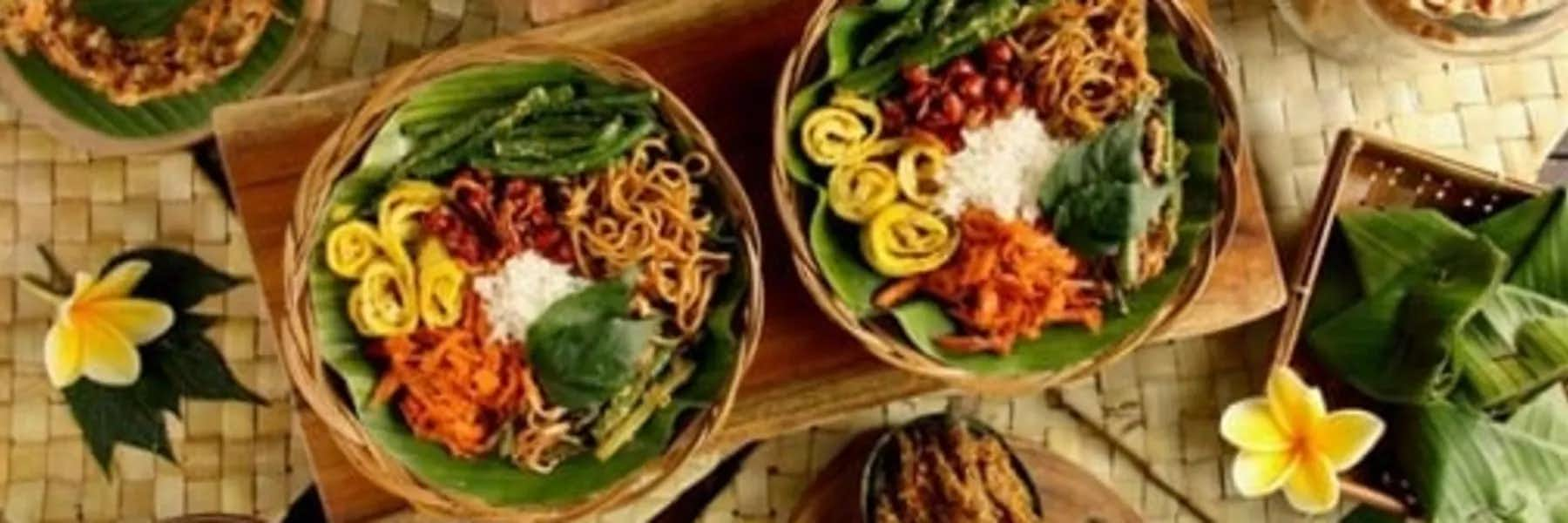As Anthony Bourdain once said, "I think food, culture, people, and landscape are all absolutely inseparable."
Isn’t that the reason we travel? So that we discover and experience everything about the country we’re visiting. Food expresses so much about different cultures and in Bali, it’s no exception. Every mouthful is filled with just as much vibrancy as the island’s landscapes and customs. I don’t like cooking but I am a foodie, so it’s been a fun time discovering the diverse cuisine of Bali and its neighboring islands while living here for the past three years. Each meal is fresh, bursting with flavor and cooked in traditional ways which date back many years. Because Bali is predominantly of Hindu faith, you’ll rarely find beef on the menu. Don’t worry though, there’s an amazing array of dishes consisting of fish, pork, chicken, and the freshest vegetables and tropical fruits to choose from.
What Kind of Food is Served in Bali?
Balinese food has been influenced by Chinese, Indian, and Middle Eastern cuisine and mixed with indigenous recipes over thousands of years. The basis of most Indonesian/Balinese cooking is chili, garlic, shallots, and coconut oil. Depending on the dish, various spices and fresh ingredients will be added to create amazing cuisine. The different areas across Bali have their own distinctive variations to all meals, which just adds to the foodie adventures. Bali’s most popular dish is Nasi Goreng. A fragrant rice dish made from chicken, prawns, and vegetables, topped with shredded omelet or a fried egg, I find it to be the ultimate in comfort food.
What Food Should You Avoid in Bali?
Just remember, if hot and spicy food is new to you, go slow. Balinese food can be fiery at times, the local sambal is made from fresh chilies after all. Sambal Matah is the accompaniment mostly served, made with shallots, garlic, chilies, and oil. Satay is another favorite for many, but can include peanuts at times, so for those with peanut allergies, steer clear. Street food is everywhere in Bali, however trust your instincts and eat where you know hygiene is a priority. You don’t want the dreaded “Bali Belly” to affect your time in paradise.
How Much is a Meal in Bali?
Eating local food in Bali is inexpensive. For a truly local experience choose a warung, which is a basic restaurant serving traditional foods and mixture of basic western meals. Or visit one of the many local food markets and you’ll be surprised how little your meal will cost. A main meal will set you back around $2 to $6 while the local beer will cost about $2.50, or a bottle of water for $1. Of course, if you select a more upmarket restaurant then costs will increase. Having said that, Bali is a great place to enjoy a fine dining experience at a fraction of the price at home.
Wine is expensive in Bali, but the local brand called Hattens, which is produced in Bali, is reasonable and quaffable at around $20 to $25 a bottle.
So, when next in Bali, here are 10 traditional dishes you must try:
Nasi Goreng
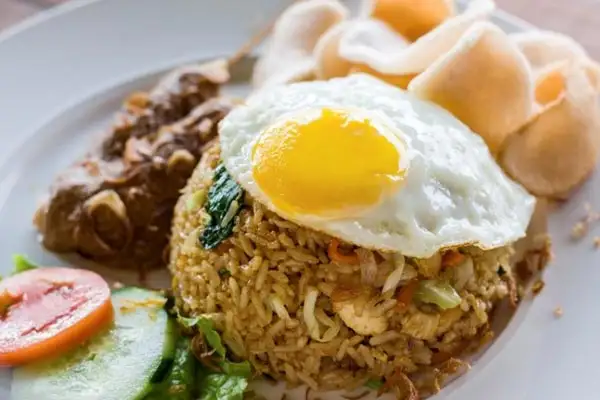
This should be classed as the national dish of Indonesia—Nasi Goreng literally means fried rice in both the Indonesian and Malay languages, and is a popular staple here in Bali. You’ll find this dish in every restaurant, there are many varieties that usually include chicken or pork, vegetables, and tofu with a fried egg and shallots placed on top. Often, it’s served with some satay sticks along with a side of pickled vegetables and prawn crackers. It’s salty, sweet, spicy, and always delicious. The noodle version of this dish is known as Mie Goreng, and is just as tasty. Both the mie and nasi are simple and delicious, eat either one for breakfast, lunch, or dinner.
Satay
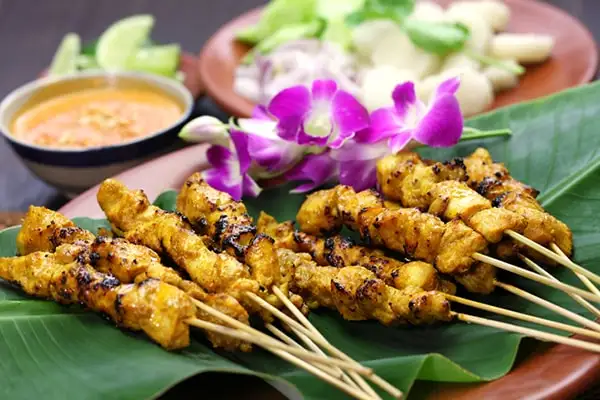
Sate (satay) is essentially pieces of grilled meat threaded onto skewers. This is classic food in Bali and can be found in many fine-dining restaurants or as street food on various corners across all of the Indonesian islands. Every region has their own alternatives, but Bali’s Sate Lillit mixed with coconut milk, is one of the best tasting and very popular.
While satay means spicy peanut sauce, not all variations include peanuts in Bali. Usually made from minced pork, chicken, or fish, the meat is soaked in coconut milk, grated coconut, and spices. It’s then wrapped around the skewers before grilling over glowing coals or an open fire. The flavors are a combination of sweet, spicy, and savory, and will definitely leave you wanting more.
Babi Guling

This is most likely Bali’s most iconic dish, also known as suckling pig, babi guling is a delicacy. Given that Bali is predominantly Hindu, it’s not surprising to find this is one of the most eaten meals on the island, by the local people and visitors. For the Balinese it’s a dish that’s made for special occasions, in the lead up to a special ceremony the whole pig is meticulously prepared and cooked for hours. The skin is coated with turmeric and other spices and cooked to a crispy flavor, while a spice paste made from coriander, lemongrass, lime leaves, chilies, and ginger is stuffed inside. Then it’s slowly roasted and basted, turned for hours on a spit over burning coconut husks until super tender. In a restaurant or warung it’s served with fluffy rice, stewed vegetables, and a few pieces of crispy skin.
Nasi Campur
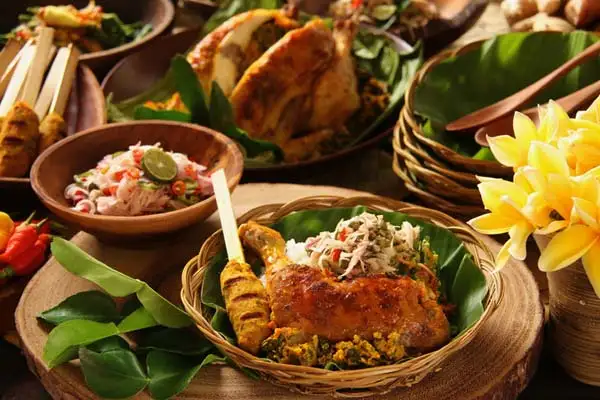
In Balinese, nasi campur basically means a mix of food with rice. It’s a favorite with the locals and visitors alike. A good nasi campur will include an assortment of grilled chicken, beef rendang, grilled tofu or tempeh, and a mixture of vegetable dishes all placed around a scoop of yellow or white rice. For more flavor try the red rice when it’s on offer. In some warungs, they’ll serve this dish buffet-style, you can point and choose what you’d like to try. There are no rules to this dish, so you can be guaranteed of it never tasting the same twice. It’s a great way to sample a range of Bali favorites.
Bebek Betutu
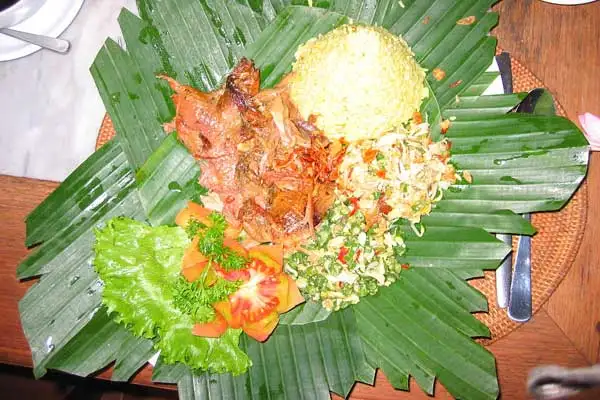
This smoked duck dish is one of the most unique meals in Bali, in that it’s 100% Balinese. The meat is rubbed and stuffed with the Betutu mixture of spices which is sautéed with coconut oil to release its flavors. The meat is then wrapped in palm leaf or betel nut bark, and smoked with embers of rice husks. In some restaurants you’ll be required to give 24 hours’ notice, not surprising since cooking time can take up to 12 hours for an authentic dish. The finished product will melt in your mouth and is bursting with flavor, served with rice and local water spinach. As an alternative, this dish is sometimes made with chicken.
Martabak

This is one of my favorite street foods to eat in Bali, sweet or savory, watching this dish being made is almost as delightful as eating it. Once your order is placed, the vendor will prepare the filling with eggs, vegetables, and chicken. Then a ball of dough is placed onto an oiled surface, stretched until it’s very thin and fried in a shallow pan. It bubbles instantly then filled with the omelet mixture, sliced green onions, and cilantro. It cooks fast, the dough is folded around the omelet mixture until a neat rectangle is formed. Once cooked, it’s sliced into squares and served with hot chilies and pickled vegetables. The sweet version looks more like a giant crumpet, and with fillings such as chocolate, condensed milk, and cheese, it’s perfect for a late-night snack.
Pepes Ikan
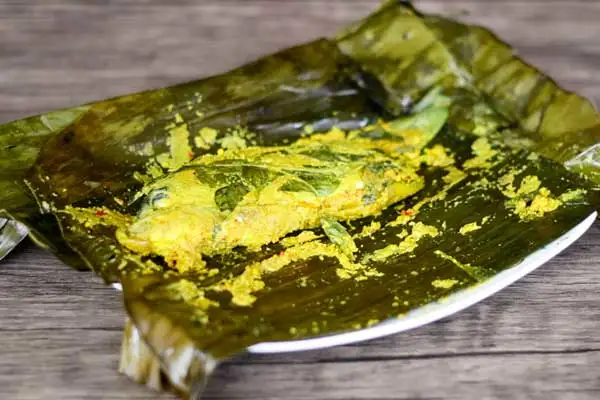
Pepes is the Indonesian method of cooking using banana leaf as a food wrap. The leaf means the meat is steamed when cooking and ensures the flavors are absorbed through the food, giving a delicious end result. Ikan is fish, the meat is minced and mixed with spices then steamed within the banana leaf. Rice is served with the meat, and the aromas of the steam released when you unwrap the leaf is amazing.
Beef Rendang
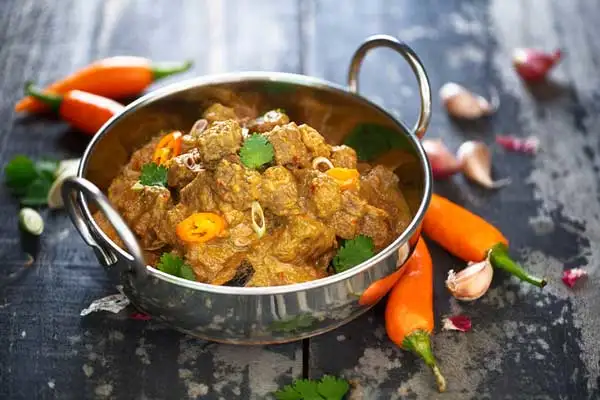
The popularity of this meal has enabled tourists and locals to enjoy this West Sumatran dish all over Bali and Indonesia. The slow-cooked beef is a favorite for many, it can very spicy or mild depending on the area you’re eating in. Beef is cooked for hours in a mixture of coconut milk and spices until the meat is tender and lush with flavor. Whilst tastes may be similar to an Indian curry, the Balinese version is dry and aromatic.
Soto Ayam
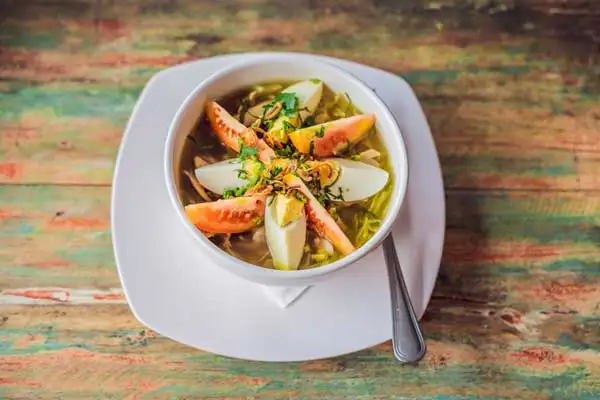
This yellow spicy chicken soup is found in almost every restaurant, a traditional soup packed with noodles, compressed rice cakes, chicken, hard-boiled eggs, and vegetables. Turmeric spices are what give it a yellow coloring and variations may include fried garlic and prawn crackers. Served steaming, it’s the ultimate comfort food for us expats.
Dadar Gulung
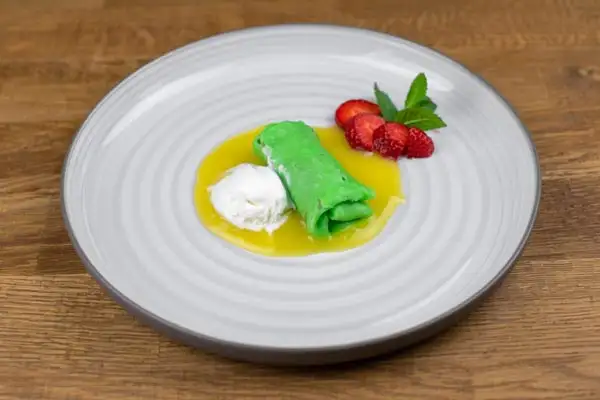
Dadar Gulung is my favorite Balinese dessert, a perfect indulgence. Thick freshly cooked crepes, colored green with pandan leaves, are filled with fresh coconut and palm sugar. There’s also a version of crepes colored pink from dragon fruit.
They are so fresh and light and made even better with a dollop of vanilla ice cream, the picture-perfect end to a traditional meal in Bali.
